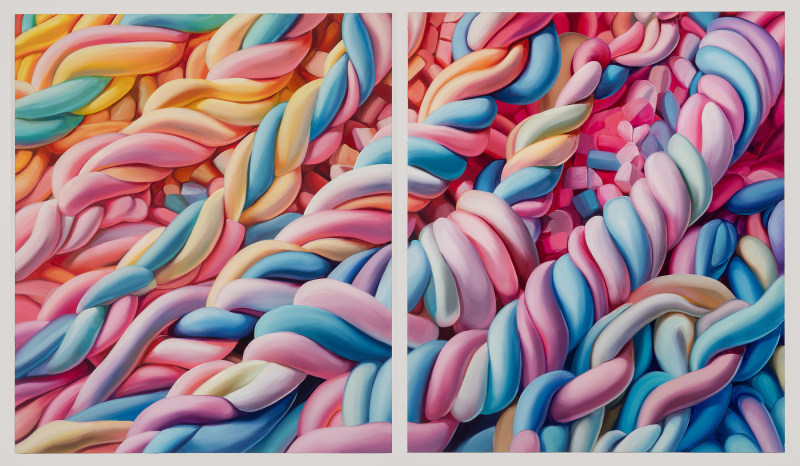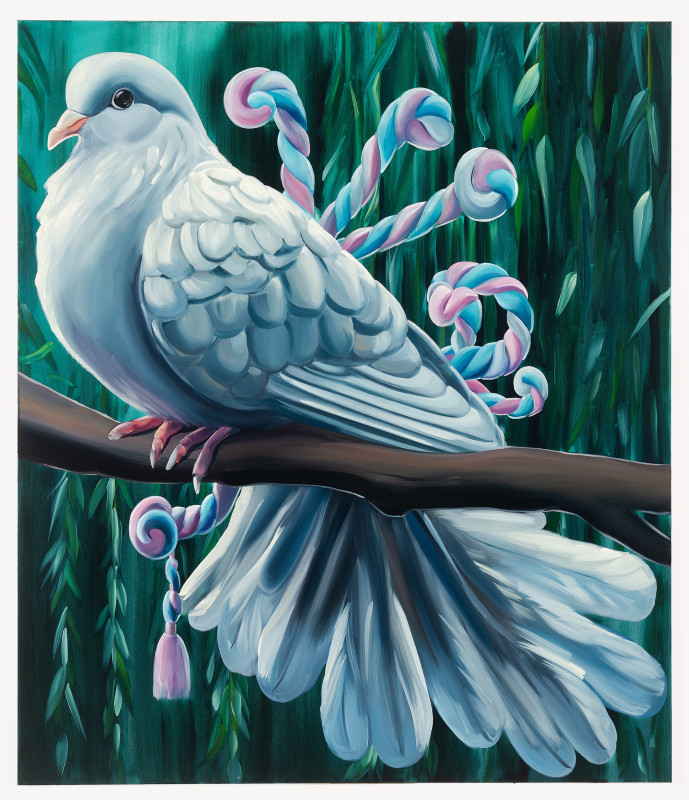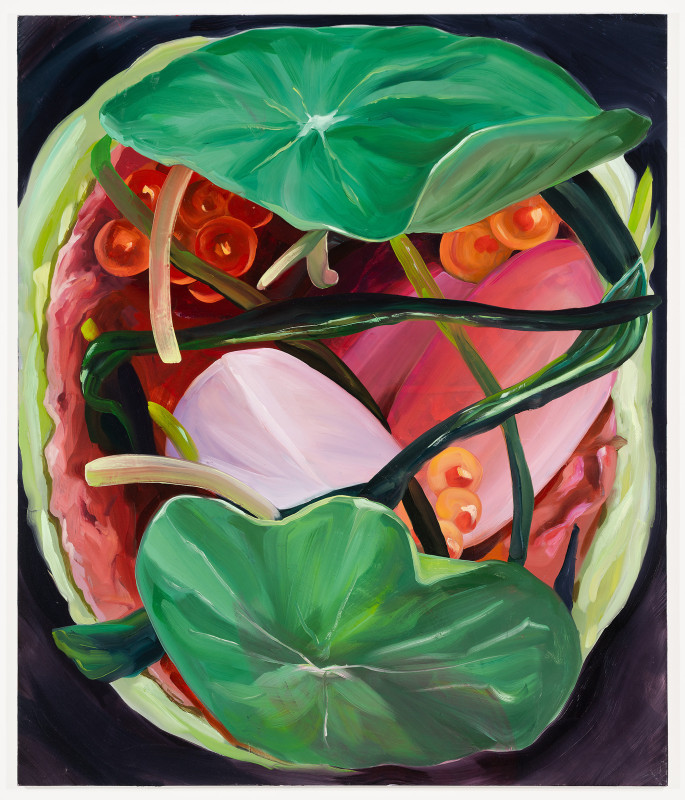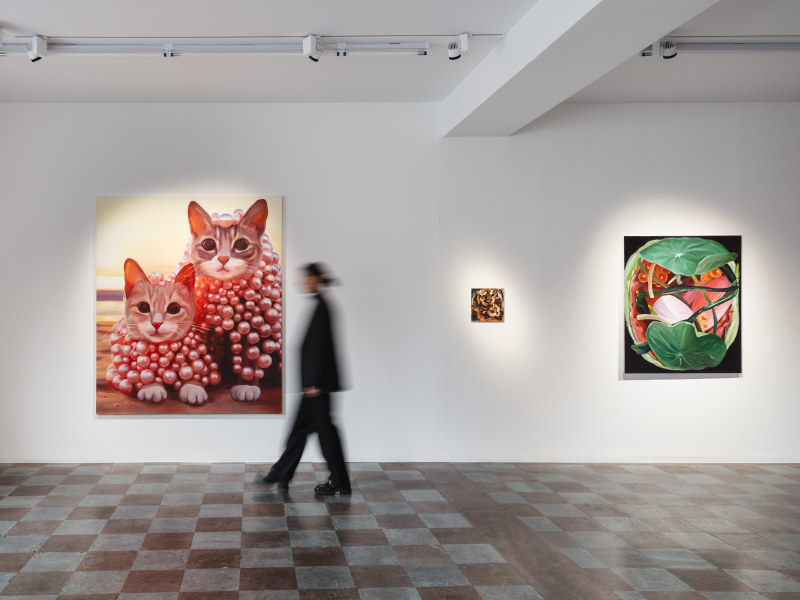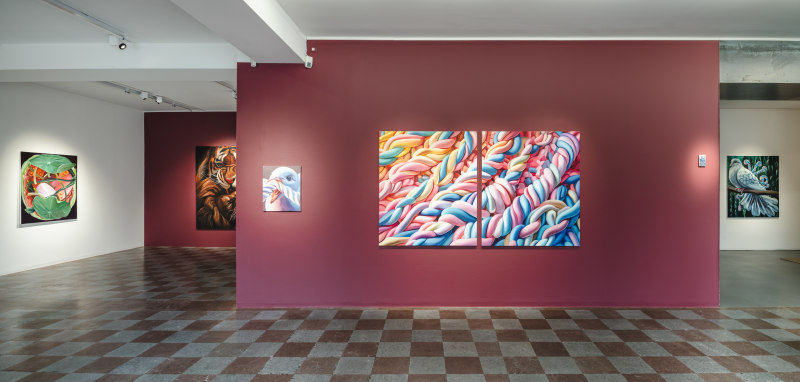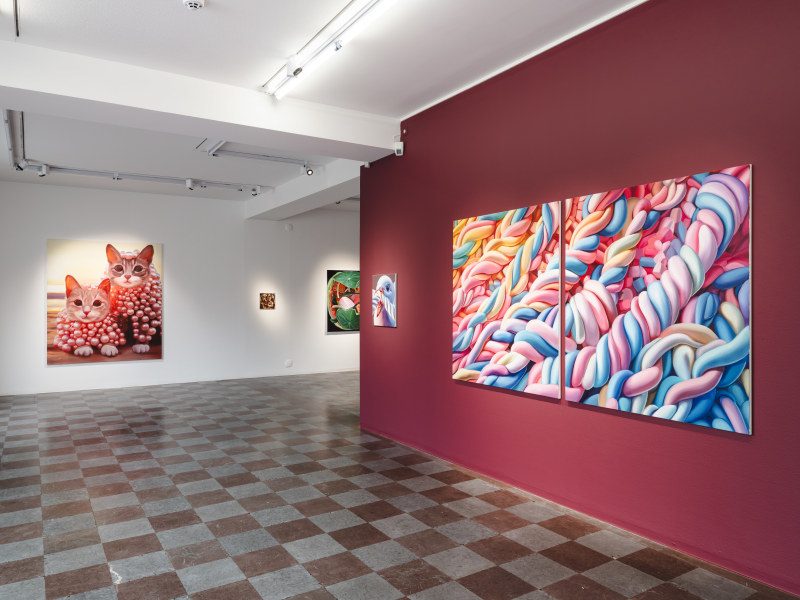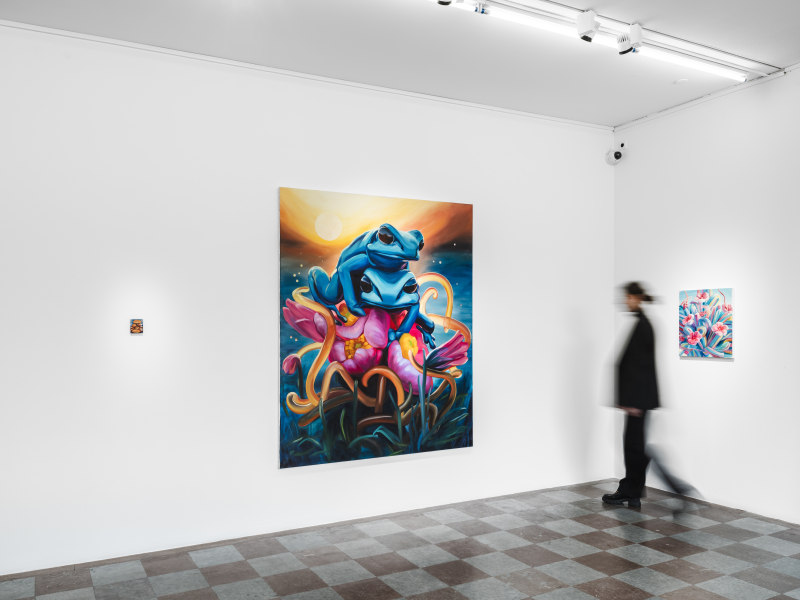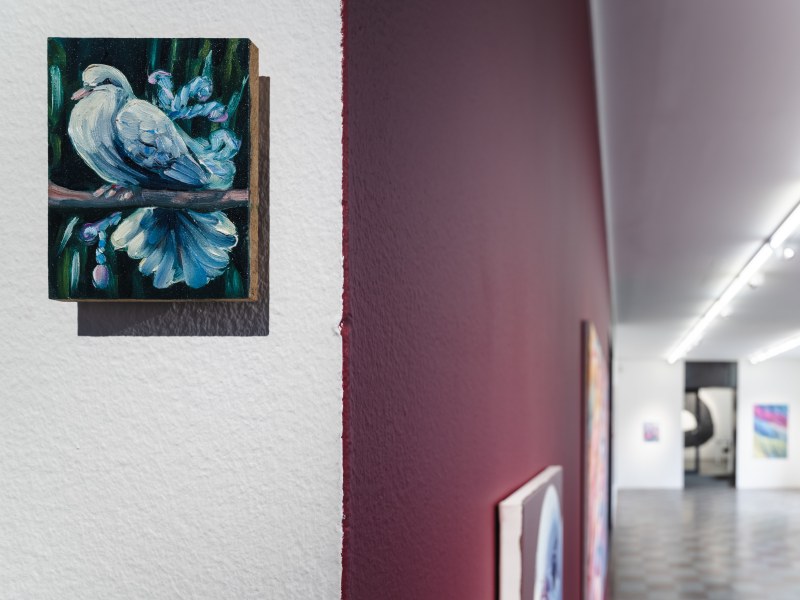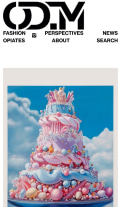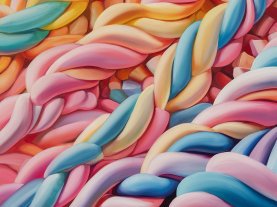
Wetterling Gallery is pleased to present Ekfraser (Ekphrases), Malin Molin’s second solo exhibition at the gallery.
The title Ekfraser (Ekphrases), derived from the Greek ekfras, describes a literary, usually vivid description of, or commentary on, a visual work of art. Under its umbrella, Molin offers a commentary on today’s culture of image, while employing painting as a depiction of an image – a type of meta perspective which allows to focus on the effect, rather than the picture’s meaning. The artist is hence interested in the broad usage of imagery and its understanding, while simultaneously pinpointing that the medium of painting allows for a distancing between oneself, and the images produced.
Throughout this presentation of visceral, colour-saturated figurative works, Molin conducts an exploration of the image culture, of the human eye’s perception of imagery in a world that is constantly exposed to visual stimulation. As a counterbalance, oil painting - Molin’s medium of choice - is put forward in terms of its specificity and innate characteristics, such as materiality, physicality, tactility.
In the past, Molin chose her motifs from existing images available online, usually issued from social media. While present works exist in a similar realm conceptually, they were generated by the artist using AI software, such as Open Ai's Dall-e 3 or Midjourney. When inputting a written ‘prompt’ – for example, Photo of twisted pastel colored pink blue, white and yellow marshmallow ropes wrapped around each other like tentacles in sunset pattern – such software delivers an image that will then be employed as a template, haphazardly altered and translated into painting as a depiction of the image. Beyond fully embracing externally sourced images as a starting point, this choice stands as an essential part of Molin’s attempt of understanding the systems of image production that shape our reality, our desires, our minds, our bodies. The artist further acknowledges the software’s contribution to the creative process by titling many of the paintings on display with the linguistic formula employed to generate their template.
Overall, Molin looks to draw the viewer’s attention to the infrastructure of images, as opposed to their visual meaning. While motifs are mostly issued from the animal and vegetal realms, the resulting image is governed by a purposely artificial light and a sense of peculiarity. Viewers might feel inclined to notice allegorical aspects, particularly in works such as Biblical proportions, which depicts a forceful scene between a lion and a tiger. While indeed such metaphorical elements are present, they are not central to Molin’s intent. Her purpose remains in investigating effects of image consumption, derived from our quotidian usage of an array of media that turns imagery ubiquitous.
____
Malin Molin was born in 1989 in Gothenburg, Sweden, where she continues to work and live. She holds an MFA from the Royal Institute of Art, Stockholm (2021) and a BFA from the Chelsea College of Art, London and the Royal Institute of Art, Stockholm (2016).
____

